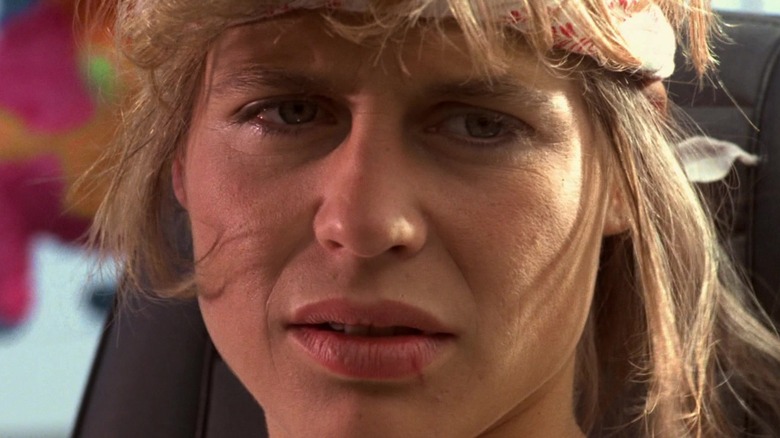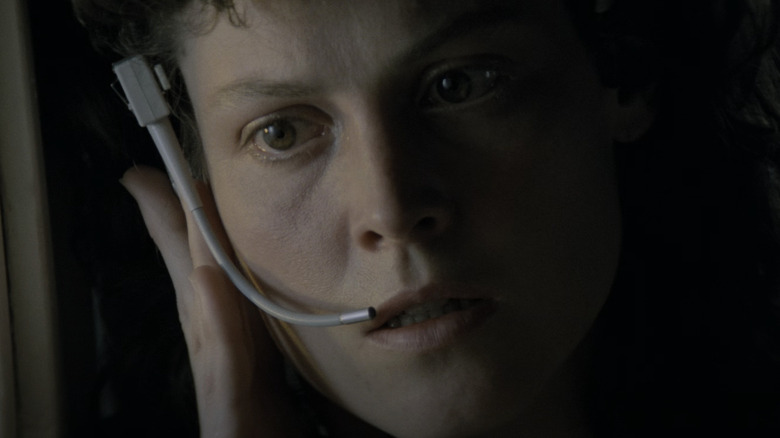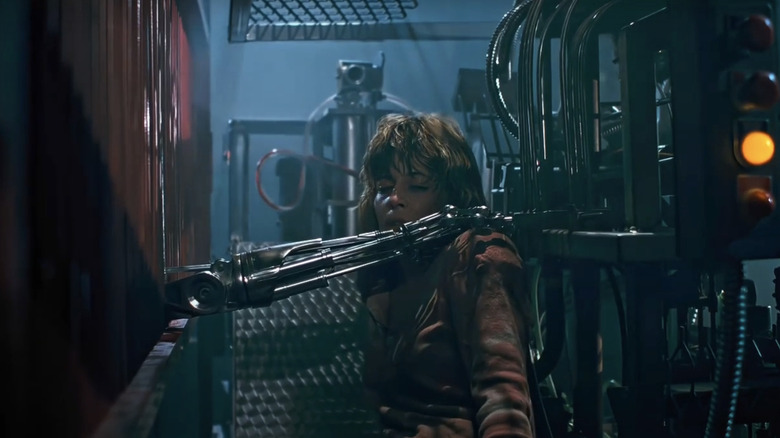There’s so much to love about 1984’s “The Terminator” that it’s hard to imagine how much of a slog it was to get made. Director James Cameron worked on a tight budget under incredible time pressures and was constantly forced to pivot when things went awry. Still, he produced a sci-fi horror classic that betrays nothing of its troubled production. So much of his directorial debut (we’ll gloss over his part in “Piranha II: The Spawning”) just worked, but for Cameron, without Linda Hamilton’s Sarah Connor at the center, there was no movie.
Producer Gale Anne Hurd saved “The Terminator” from a happy ending. Had certain studio executives had their way, the iconic scene that manifested Cameron’s nightmarish vision of a Terminator exoskeleton rising from the fire would have been cut in favor of a final shot of Kyle Reese (Michael Biehn) and Sarah Connor hugging. Imagine the legacy of this film without the intense climax that culminates in Sarah’s incredible final line as she crushes Arnold Schwarzenegger’s T-800: “You’re terminated, f****r.” I think it could be argued that “The Terminator” wouldn’t have been as enduring a sci-fi classic as it became without Sarah taking matters into her own hands, defeating the Terminator herself, and beginning her transformation into a certified badass.
For Cameron, who has a history of writing powerful female leads, having Sarah act as a hero in her own right was integral to the story, and it seems he was at least partly inspired by another legendary female of sci-fi.
James Cameron took his Terminator cues from a sci-fi classic
There’s a reason Linda Hamilton said “no” when “Terminator: Dark Fate” tried to soften Sarah Connor. She understood the character’s standing as one of the all-time great female heroes in cinematic history, and that to rob her of her strength and steeliness would be to undermine the character entirely. James Cameron wouldn’t have had it any other way, either. When he first wrote “The Terminator” he had already signed on to write and direct another sci-fi project that would feature the archetype for Sarah Connor.
Cameron spoke to The Ringer about the history of “The Terminator” for the film’s 40th anniversary, revealing that he already had plans to direct the sequel to Ridley Scott’s seminal 1979 space horror “Alien” after being drawn to Sigourney Weaver’s Ellen Ripley. “The one film I really wanted to make was ‘Aliens,'” he said. “It wasn’t even called ‘Aliens’ at that point. But I had already signed on to do that before I even started on ‘The Terminator’ and I wrote that script before I started on ‘Terminator.'” Expanding on his passion for the “Alien” sequel and his enthusiasm for bringing Ripley back to the big screen, he added:
“I was attracted to Ripley. I mean, you know, just the iconic Ripley who just, that’s a last girl story. It’s a very elevated version of a last girl horror story, but done very, very well and with an amazing actor […] so I think there are things you do instinctively.”
Those instinctual things are, you might say, creating another female sci-fi hero that mirrored Ripley’s character.
Sarah Connor is Ellen Ripley 2.0
While James Cameron stopped short of confirming that Sarah Connor was based on Ripley in his Ringer interview, the director did talk about writing “The Terminator” as a “last girl horror story” in much the same way as he saw “Alien” as an example of that particular horror trope. “I wrote this story that was female-centric,” he said with regard to “The Terminator,” continuing, “and in my mind, I was kind of doing another last girl horror film with a tech component to it.” It seems fair to assume, then, that some of Cameron’s admiration for Ripley and her “elevated last girl” story came through in his “Terminator” script and that this is what he was talking about when he said there are things you do instinctively.
Interestingly enough, whether instinctively or not, Cameron continued Sarah Connor’s mirroring of Ellen Ripley with 1986’s “Aliens” and 1991’s “Terminator 2: Judgment Day.” In the former, Ripley takes on a much more traditionally heroic role, having been through somewhat of a baptism of fire in “Alien” and emerging as a much more battle-ready figure in the sequel. With “T2,” the exact same is true of Sarah Connor, who busts out of a mental hospital before gathering an arsenal of weapons to unleash hell on Cyberdyne Systems — creators of the AI that would wipe out humanity, Skynet.
In a sense, then, Ridley Scott’s original “Alien” not only helped birth Sarah Connor in “The Terminator,” we might well have been without the unimpeachably perfect “T2” — which is kinda neat considering “Alien” was thematically concerned with the idea of birth and rebirth. It’s a shame the “Terminator” timeline became so convoluted and the films so dire in the wake of “T2.” Perhaps if we ever get another film in the saga, it should take some cues from whatever Ellen Ripley is up to now. But then, that would require Sigourney Weaver’s one condition to be met in order to bring back Ripley for another go-round — a rebirth we’d all surely love to see.










